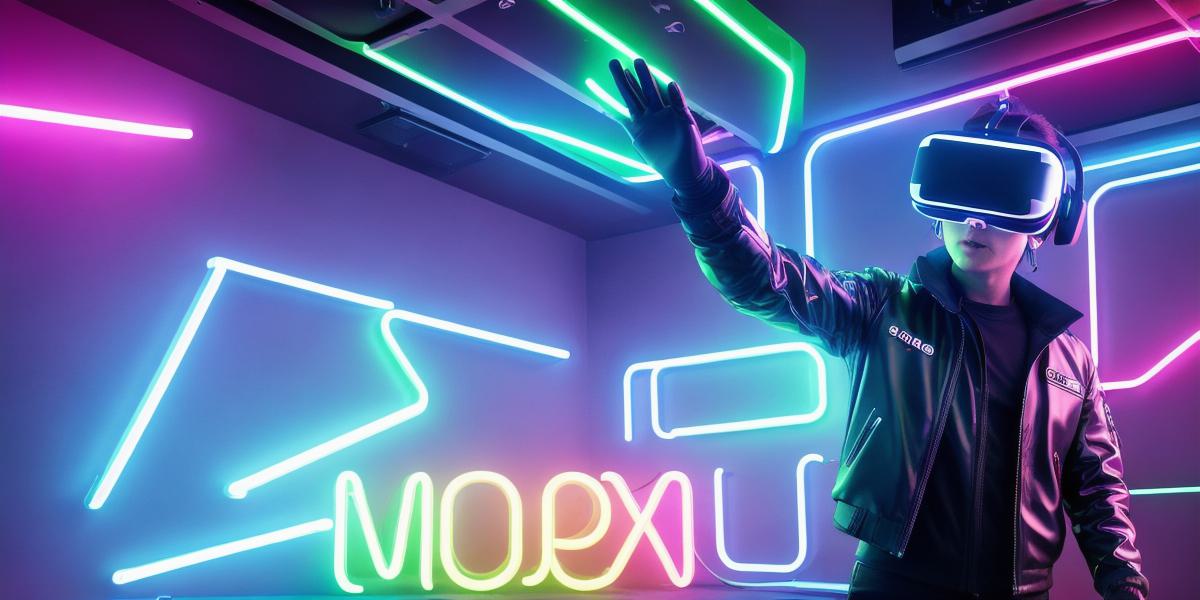XR, or "extended reality," refers to a range of technologies that enhance and expand our perception of the world around us. This term encompasses virtual reality (VR), augmented reality (AR), and mixed reality (MR) technologies. In this article, we will explore the meaning of XR, its key components, and how it’s being used in various industries, including gaming, education, and healthcare.
Virtual Reality (VR)
Virtual reality is a computer-generated simulation that immerses users in a simulated environment. In VR, the user wears a headset or goggles that track their head movements and adjusts the images they see in real-time. This technology is often used for gaming and entertainment purposes, allowing players to experience interactive environments and characters.
Augmented Reality (AR)
Augmented reality, on the other hand, is a technology that overlays digital information onto the real world. AR allows users to see and interact with virtual objects in their physical environment. This technology is often used for educational purposes, allowing students to visualize complex concepts and ideas.
Mixed Reality (MR)
Mixed reality is a combination of VR and AR technologies that create an immersive experience that blends the real world with digital elements. MR allows users to interact with virtual objects in their physical environment while still being able to see the real world around them. This technology is often used for training purposes, allowing professionals to practice and perfect their skills in a safe and controlled environment.
Key Components of XR Technologies
The key components of XR technologies include:
- Head-mounted display (HMD) or headset: This device tracks the user’s head movements and adjusts the images they see in real-time.
- Computer: The computer generates the virtual environment and digital information that is displayed through the HMD.
- Sensors: These devices track the user’s body movements, allowing them to interact with virtual objects.
- Motion capture system: This technology captures the user’s movements and translates them into actions in the virtual environment.
- Input devices: These include controllers or gloves that allow users to interact with virtual objects.
Industries Using XR Technologies
The gaming industry is one of the most well-known for using XR technologies, but there are many other industries that are beginning to adopt these technologies as well. Some examples include:
- Education: AR and VR technologies are being used in education to help students visualize complex concepts and ideas. This technology can also be used to create virtual simulations of historical events or scientific experiments.
- Healthcare: XR technologies are being used in healthcare to train professionals, such as doctors and nurses, in a safe and controlled environment. This technology can also be used for therapy purposes, allowing patients to experience immersive environments that can help with pain management or rehabilitation.
- Real estate: AR and VR technologies are being used in real estate to allow potential buyers and renters to see properties in 3D and explore them virtually. This technology can also be used for interior design purposes, allowing users to visualize different layouts and furniture options.
- Manufacturing: XR technologies are being used in manufacturing to improve the accuracy of production processes and reduce waste. This technology can also be used for training purposes, allowing professionals to practice their skills in a safe and controlled environment.
FAQs
Q: What is the difference between VR, AR, and MR?
A: VR creates an immersive experience that completely blocks out the real world, while AR overlays digital information onto the real world. MR combines both technologies to create a blended experience that allows users to see and interact with virtual objects in their physical environment.
Q: What are some common uses of XR technologies?
A: VR is often used for gaming and entertainment purposes, while AR is used for educational purposes and marketing. MR is often used for training and simulation purposes.
Q: How does XR technology work?
A: XR technology works by tracking the user’s head movements and body movements using sensors and motion capture systems. The computer generates the virtual environment and digital information that is displayed through the HMD. Input devices allow users to interact with virtual objects.
